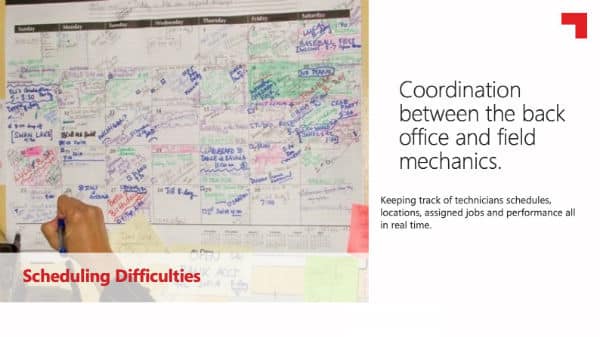The Most Common & Critical Mistakes In Field Service
Let’s face it. Every business has its own challenges but when it comes to Field Service Management (FSM) organizations, it’s a herculean task for field service managers that involves multiple levels of coordination from the operations, to the field service teams, and all the way to the customers. FSM organizations also have to optimize their resources and consider keeping operational costs at bay while attempting to increase profitability and customer satisfaction from each field service visit. Doesn’t sound so easy does it?
A good field service management solution allows organizations to combine mechanical and administrative aspects of field service tasks to meet customer expectations, balance the workforce and generate revenue. In today’s business ecosystem, irrespective of industry, field service managers should also consider adapting with new technology to optimize business process and save time.
However, before we can reimagine a good field service solution, lets dive into some of the common (and critical) issues faced in field service management.

Scheduling Difficulties
For field service visits to be successful, a certain coordination process has to be implemented and well executed between the back office and field mechanics. This process begins right from when the service call is initiated and its then forwarded down the chain of command to each relevant person.
With a poorly coordinated process, it will take time before the actual instructions and details from the service call reach the intended field service mechanic. For them to execute the service call, issues such as coordinating resources, equipment and transportation have to be aligned and working together so the service visit can be executed smoothly.
A good field service management application can solve scheduling adherences by coordinating the back office with field service mechanics while keeping track of mechanics schedules, locations, resources, assigned jobs and performance, all in real time. This can significantly increase the rate of completed jobs.

Low First Time Fix Rates
First time fix rates are crucial to the DNA of field service as it’s the most frequently measured KPI in field service organizations. It’s the measurement to the quality and productivity or the organization.
The average first-time fix rate for any FSM organization is approximately around 77%. That means 23% of service visits requite follow-up visits, added dispatch costs and it also means taking field mechanics away from other service work they could have been performing. We have to keep in mind that each site visit can be cost consuming, especially to those that do not lead to a proper resolution.
Lower first time fix rates lead to lower revenue, cost, productivity and most importantly, customer satisfaction.

Miscommunication with Customers
A lack of coordination from field service companies can lead to customers getting different information from different sources and this can be really frustrating given that customers cannot afford to have delays or be kept out of the loop on service calls as it also affects the business they conduct. No one wants to deal with multiple visits, delayed service or forgotten tools when a field service mechanic arrives. In fact, the Genesys Global Survey found that 78 % of customers rate themselves as happier with a service event simply by being serviced by field representatives who are competent and armed with the technology, information, parts and tools required to complete a job.
As the points discussed above are crucial to good field service management, we have to remember that the customer is always at the centre of the field service operations. Gartner notes that 70% of field service organizations will cite customer satisfaction as a primary benefit derived from implementing good field service management in 2019. This statistic increased up from approximately 50% in 2018. Integrating customer relationship management with field service operations are vital to extend the visibility of the process to the customer.

Data & Performance Management
According to the Economist, the world’s most valuable resource is no longer oil, but data. In todays digitally transformed and connected word data is produced in vast streams at a massive volume and pace.
The amount of data collected from a field service organization through its customers, field visits, and workforce can set it apart from the competition. The problem that many field service organizations have is that they lack precise and clear data, especially when it comes to making important business decisions. Many companies still rely on manual methods that do not provide accurate analytics. This can lead to misinformation when capturing data from the field.
Today, there are a variety of field service software’s that help eliminate such an issue and when it come to data, its always better to implement technology to capture it than to rely on human assistance completely.

Annata 365 For Field Service
Annata 365 For Field Service provides industry-specific capabilities that helps companies improve customer satisfaction and empowers organizations to improve productivity while delivering reliable service using advanced analytics, machine learning and IoT capabilities. Built on Microsoft Dynamics 365 for Field Service, Annata’s solution provides industry-specific capabilities that helps companies improve customer satisfaction and empowers organizations to improve productivity while delivering reliable service using advanced analytics, machine learning and IoT capabilities.
Among the wide ranging features the solution offers:
- A complete 360 degree view of all devices.
- Service order is raised automatically with appropriate resource requirements and actions required.
- Instant scheduling of service technicians. Technicians also work with mobile app experiences.
- Mobile device location (GPS) / GPS Tracking.
- Extensions to existing entities for work orders.
- Customer DocuSign electronic signature and completion of work order.
- Notifications for both iOS and Android devices.
- Introduction of new entities for job lists, operation codes and warranty information.






